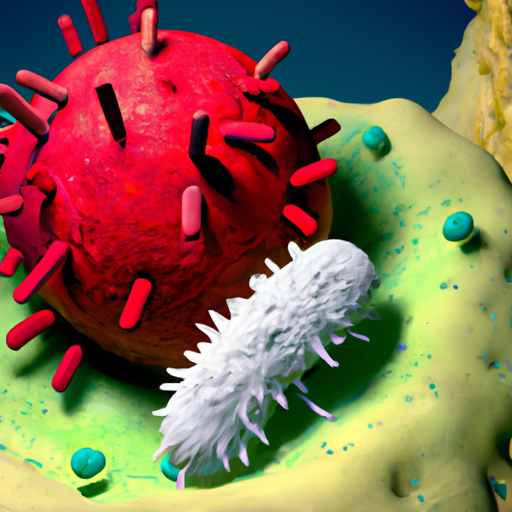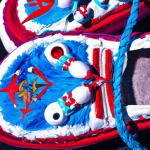How do Human White Blood Cells Help Destroy Pathogenic Bacteria: Unveiling the Immune System’s Superpower!
When it comes to protecting our bodies from harmful invaders, our immune system is nothing short of a superhero. One of its most powerful weapons in the fight against pathogenic bacteria is the white blood cells. These remarkable cells play a crucial role in identifying and destroying harmful bacteria, keeping us healthy and free from infections.
White blood cells, also known as leukocytes, are a vital component of our immune system. They are produced in the bone marrow and circulate throughout our body via the bloodstream, constantly on the lookout for any signs of trouble. When a pathogenic bacteria enters our body, white blood cells are the first responders, ready to take action.
There are several types of white blood cells, each with its own unique function. However, in the context of destroying pathogenic bacteria, two types of white blood cells stand out: neutrophils and macrophages.
Neutrophils: The Frontline Defenders
Neutrophils are the most abundant type of white blood cells and act as the first line of defense against invading bacteria. They are attracted to the site of infection by chemical signals released by damaged tissues or other immune cells.
Once at the site of infection, neutrophils use various mechanisms to destroy pathogenic bacteria. They can engulf the bacteria through a process called phagocytosis, forming a vesicle around the bacteria and breaking it down with enzymes. Neutrophils can also release toxic substances, such as reactive oxygen species and antimicrobial peptides, which directly kill the bacteria.
Furthermore, neutrophils can also release extracellular traps, known as neutrophil extracellular traps (NETs). These NETs are composed of DNA, histones, and antimicrobial proteins, which trap and kill bacteria in a web-like structure.
Macrophages: The Clean-up Crew
Macrophages, another type of white blood cell, are responsible for engulfing and destroying bacteria, as well as other cellular debris. They are present in various tissues throughout the body, acting as the body’s clean-up crew.
When a pathogenic bacteria is detected, macrophages surround and engulf it through phagocytosis. Once inside the macrophage, the bacteria is destroyed by a combination of enzymes and toxic substances. Macrophages also play a crucial role in presenting bacterial antigens to other immune cells, initiating a more targeted and specific immune response.
Additionally, macrophages can release chemical signals, known as cytokines, to recruit other immune cells to the site of infection and coordinate the immune response.
The Power of Collaboration
While neutrophils and macrophages are the main players in destroying pathogenic bacteria, they often work together in a coordinated effort. Neutrophils are the first to arrive at the site of infection, quickly neutralizing the bacteria and creating a favorable environment for macrophages to come in and complete the clean-up process.
Furthermore, both neutrophils and macrophages communicate with other immune cells, such as T cells and B cells, to initiate a more targeted and adaptive immune response. This collaboration ensures that the body mounts an effective defense against the invading bacteria.
In Conclusion
Human white blood cells, particularly neutrophils and macrophages, play a crucial role in destroying pathogenic bacteria. Through mechanisms such as phagocytosis, release of toxic substances, and the formation of extracellular traps, these remarkable cells neutralize and eliminate harmful bacteria, keeping us healthy and protected.
Understanding the superpower of our immune system’s white blood cells sheds light on the intricate and fascinating world of human biology. By appreciating the vital role these cells play, we can better appreciate the remarkable defense system that keeps us safe from pathogenic bacteria.




